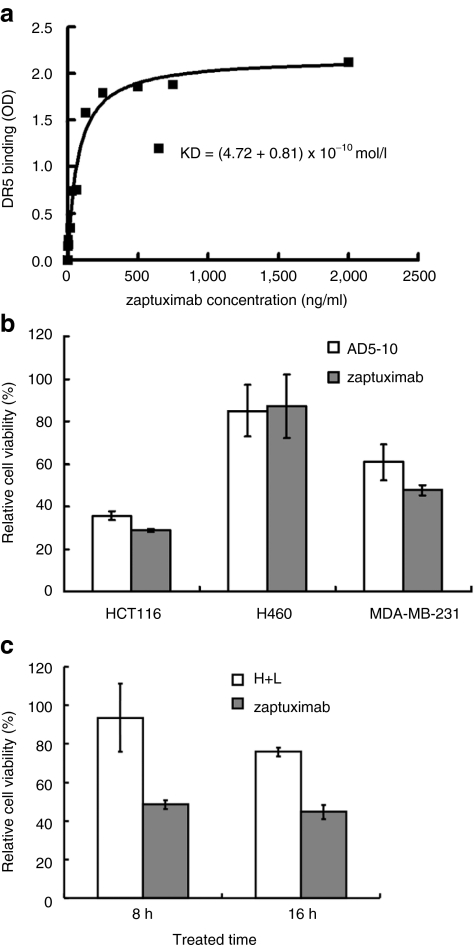Figure 3.
2A peptide-based, lentivirus vector-expressed zaptuximab showed a binding affinity and cytotoxicity similar to that of its parental antibody. (a) Binding affinity of zaptuximab to DR5. Recombinant human DR5 protein was immobilized in a 96-well plate. The plate was then incubated with conditional medium from pWPXL-HF2AL-transfected HEK 293 cells. The binding affinity was measured with enzyme-linked immunosorbent assay using an anti-human immunoglobulin G Fc-HRP antibody. The presented data are representative of three independent experiments. (b) Comparison of cytotoxicity between zaptuximab and AD5-10. The tumor cell lines H460, HCT116, and MDA-MB-231 were plated in a 96-well plate at a density of 104/well and treated with 1 µg/ml of zaptuximab in conditional medium from pWPXL-HF2AL-transfected HEK 293 cells and AD5-10 for 24 hours. Then cell viability was determined using an MTS assay. Replicates were averaged, and the error bars represent the SEM of three independent experiments. (c) Differences in the cytotoxic activity of zaptuximab and the H+L chimeric antibody were detected in HCT116 cells at the indicated treatment time point. Replicates were averaged, and the error bars represent the SEM of three independent experiments. HRP, horse radish peroxidase; MTS, 3-(4,5-dimethylthiazol-2-yl)-5-(3-carboxymethoxyphenyl)-2-(4-sulfophenyl)-2H-tetrazolium.

